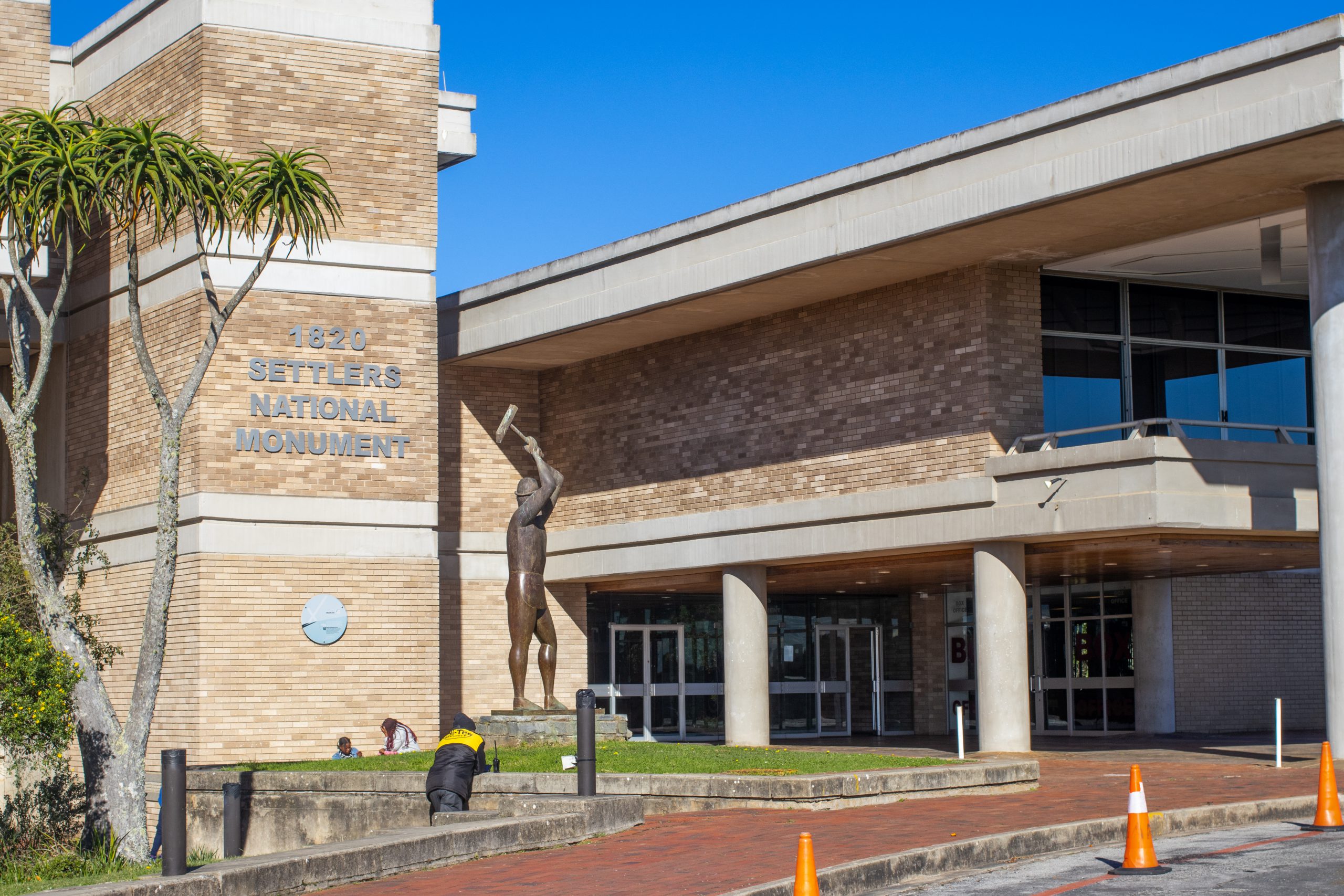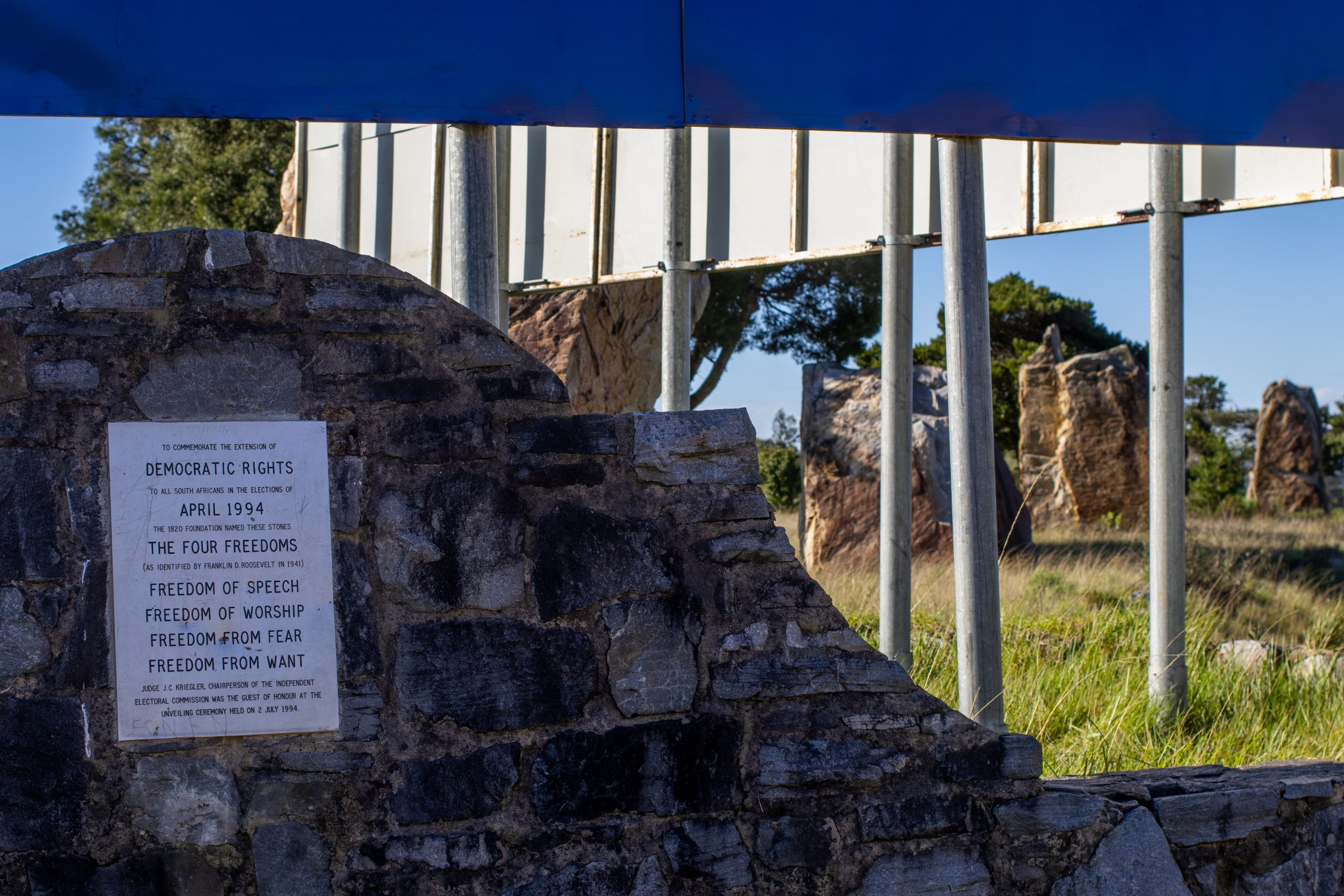By Rikie Lai
Makhanda has been home to the National Arts Festival (NAF) throughout its history and there is one monumental symbol of the rich history found within Makhanda and its festivities.
The inaugural National Arts Festival in 1974 dedicated and celebrated the official opening of what would become the centre of operations for the National Arts Festival, The 1820 Settlers Monument.
This building is the venue of choice for the Grahamstown Foundation, SciFi Africa, the National Schools Festival, the English Olympiad, graduations and many other activities throughout the year.

The inaugural NAF lasted 13 days from 8 to 20 of July 1974 and hosted and featured 64 events of exhibitions, performances, lectures and guided tours. Throughout its history, the NAF has included many different renditions of names including in 1976 when it was known as the “Shakespeare Festival”, and then again in 1979, new sponsorships shifted the name to “Five Roses Festival”, and only in the 1980s did the importance and scale of artistic and cultural work within Makhanda solidify within the artistic community as the festival would be called the “National” festival of the arts.
The year 1979 was when The Fringe festival had also launched with only 10 productions. Other additions to demonstrate the connection between the festival and the local artistic talent only grew in 1981 when the first Standard Bank Young Artists were awarded. The year 1983 marked a historic time in the NAF’s lifetime as it was a monumental occasion for the inclusion of Indigenous artists and artists of different cultural, ethnic and racial circumstances. The festival had encouraged these artists to be included, however, 1983 marked the first year these artists were placed firmly in the spotlight and at the centre of the NAF programme. Chairman of festivities at the time, Dudley Hopkins, directly addressed questions of racial representation saying: “The spotlight this year focuses, in the main, on South Africans – both living and dead. It has long been our stated intention to show off the artistic achievements of all the peoples of our country, but we have not been prepared to window dress. It is therefore with a great deal of pride that we warmly welcome another milestone along the way. Of one thing we are certain: meaningful black participation can only result in a richer experience for us all.” Then came 1984, which would see Standard Bank join as a title sponsor to NAF and the start of a fruitful 18-year partnership between NAF and Standard Bank. This partnership would continue to be a space in which the artistic community could freely express themselves and come together regardless of circumstances involving the surrounding state.
The year 1986 marked a period filled with civilian and state conflict and tension on the racial segregation laws in place, and the collapsing of the rand, all were contributing features to the 1986 NAF which organizers themed “Encounters”. This would be an attempt to create a safe space in which ideas of justice, human rights and equality allow all voices to be welcome, with Hopkins still in place as chairman of the NAF committee and being very vocal on the stance they chose to follow. This year would also observe the first published edition of Cue, which remains the source of NAF coverage.
The NAF continued to utilise its platform to provide a space where everyone could freely express themselves and promoted the ideas of equality and diversity. In 1991, NAF was able to engage with more cultural groups and artistic movements which were restricted access prior. This included the establishment of the first Artistic committee, which was multi-racial.
Professor Alan Crump produced the opening address for this NAF and stated that “the festival is moving closer to reflecting the richness and diversity of South Africa’s cultural heritage. To criticise and adopt diverse viewpoints is also an expected part of a national festival’s creative mosaic… In 1990 the festival committee publicly stated that it would consult with the then newly unbanned political parties and Barbara Masekela presented the first public and official speech on the ANC cultural policy. This seems to have been a long time ago. The speed of change in South Africa has made these events history. Since then, the festival committee has consulted with many political and cultural groups. It has been both fruitful, informative and highly beneficial. We have learnt a great deal and have been encouraged by the willingness of all concerned with the arts, to share views in an attempt to mould the cultural future of South Africa.”
Furthermore, in 1992, all attendees arrived at NAF for the first time appearing with new branding, and Crump, now chairman of the Standard Bank National Arts Committee, explained: “It was felt that the largest cultural event in the country deserved an autonomous image and a new identity.”
Then 1994 saw great celebrations throughout the country, and within NAF, due to the turn of democracy in South Africa and on 2 July the honourable Justice JG Kriegler unveiled, just near the N2 turnoff, a commemoration of democratic rights to all South Africans in the form of The Four Freedom Stones, which were about the four democratic speeches identified by Franklin D. Roosevelt in 1941.

However, with this addition, great tragedy struck in August of 1994 as fire devasted the 1820 Settlers Monument building. This would require extensive repairs and would only be completed by 1996. When construction was completed, the re-opening was re-dedicated by President Nelson Mandela and would demonstrate the importance and growth which the festival had and in which to gain national prestige.
The years 2001 and 2002 saw a great deal of change within the festival as 2001 saw an end to the long-standing Standard Bank National Arts Festival and Standard Bank taking a less majority role in the sponsors of NAF. In 2002, the National Arts Council and Provincial governance provided a significant amount in sponsorship and this would continue to grow with significant additions such as the South African Broadcasting Corporation (SABC) and the National Lotteries Distribution. This would demonstrate the economic and social scale at which NAF had built and that it was a nationally, and even internationally, recognized event. NAF is a fundamental part of South Africa’s artistic history and throughout its lifetime it has had a multitude of challenges which have been endured and is a yearly staple of the Eastern Cape. The challenges included overcoming segregation and oppression of race, as well as the challenges of a global pandemic and hosting a virtual NAF in 2020 and a hybrid variation of such in 2021. Recently, as of 2022, nationwide loadshedding was at stage 6, which displayed levels of power outages never seen in South African history.
We are now in 2024 and the year marks the 50th anniversary of Makhanda’s National Arts Festival which, for this 2024 rendition, has listed up to 40 venues and up to 261 shows of multi-disciplinary arts which tickets can currently be booked. There are 43 of these shows listed under the curated programme,184 under The Fringe as well as exhibitions and showcased by the six Standard Bank Young Artist Award winners of 2023. In addition to these events, the National Jazz Festival as well as the Eastern Cape Showcase, are both programs indicated within the 2024 National Arts Festival. NAF has, according to their accessible information regarding the 2024 rendition, emphasized that the programme champions innovation in the arts is a joint commemoration to 30 years of South African democracy, 40 years of the Standard bank Young Artists Award as well as 50 years of this National Arts Festival.



